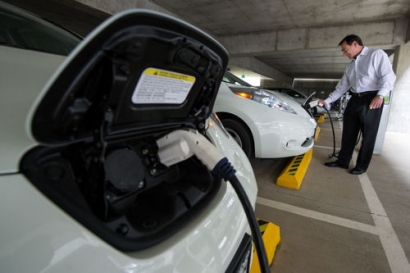
Their new report lists hybrid electric vehicle (HEVs), battery electric vehicle (BEVs), and plug-in hybrid electric vehicle (PHEVs) as the three major segments based on vehicle type. In 2016, the global EV battery market by HEVs accounted for 77% of the overall market share.
Technavio analysts highlight the following three market drivers contributing to the growth of the EV battery market; decline in price of electric vehicle batteries; increasing demand for HEVs and EVs; and government subsidies and incentives driving the sales of electric vehicles
The major cost-consuming factor of EVs is the battery. If the cost of EV batteries can be brought down, the total cost of the vehicle will decline. This can lead to a shift of the global EV market toward mainstream automotive business. It is estimated that an EV battery can be produced at $150/kWh or even less, which would be cost-competitive to gasoline-powered vehicles.
According to Raj Gaurav Singh, a lead analyst at Technavio for automotive electronics research, “The cost of EV batteries has dropped significantly since 2010 owing to improvements in the chemistry and the manufacturing process of the battery. Moreover, manufacturers can attain economies of scale as the factories become larger owing to aggressive pricing by major battery makers. It is expected that by 2030, 58% of the total lightweight automotive market would be EVs.”
The report claims the hybrid and EV markets will register growth due to several factors such as the enforcement of stringent emission norms by countries across the globe. Such efforts are being made to minimize the negative effects of global warming and reduce GHG emissions. The 2009 EU norms set CO2 emission level for new passenger cars at 130g/Km. The target is to reach 95g/Km by 2020. These targets can be achieved only by employing hybrid or EVs.
The report also points out governments of various countries are aiming to reduce their dependency on oil and to achieve this goal, they are marketing and providing benefits to increase the production and sale of EVs.
The market share of electric cars is increasing every year according to Technavio. Electric buses and heavy-duty vehicles are still at the development stage and have a relatively low market share. However, as several countries are tightening their standards, the use of electric buses is expected to increase as they help in reducing emission, maintain fuel economy, and lowering operating cost advantages the report concludes.
“Government agencies, such as the US Environmental Protection Agency, are focusing on encouraging green public transport solutions by providing subsidies. Investments in the development of infrastructure are expected to increase the use of EVs. This would directly impact the global EV battery market,” says Raj.
To request a sample click here
For more information click here

